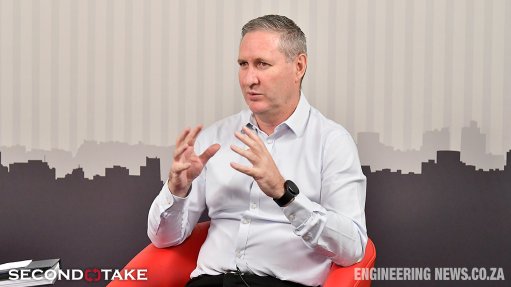Big coal wants consumers to pay for fixing its pollution problem
Some of the world’s biggest fossil-fuel producers are calling on taxpayers to help them kick their pollution habit.
The world’s biggest oil, natural gas and mining companies are stepping up their campaign to deploy carbon capture and storage, or CCS, as way to slow global warming. But with a potential $90-billion-a-year price tag, it’s too rich for them to do it on their own.
The technology siphons pollution away from the chimneys of industrial plants and injects it permanently underground. It holds the promise of reducing greenhouse gases without overhauling the world’s energy system. For all its potential, CCS raises unpalatable questions for policymakers about how to fund it, and nobody in the industry has worked out a solution beyond either direct subsidies or much higher carbon taxes. Either of those measures would make burning fossil fuels much less economical.
Even so, companies including the mining giants Glencore and BHP Billiton, as well as oil majors Royal Dutch Shell and Total, have been emboldened in their push by a United Nations report showing CCS is critical to containing global warming.
“It’s about changing the way people look at CCS from thinking that it’s kind of inevitable but impossible and turning into kind of necessary and doable,” Fiona Wild, head of climate change and sustainability at BHP Billiton, said in an interview in Edinburgh. “We need to get policy regimes in place that support development over the longer term because we need scale.”
The CCS industry’s lobby group on Tuesday released a report outlining the benefits of the technology and backers ranging from a polar explorer to the former Republican US Senator John Warner. The paper from the Global CCS Institute is meant to draw attention to the issue at the UN climate talks in Katowice, Poland, on Tuesday.Cost is the biggest impediment to CCS. The International Energy Agency estimates the price for sequestering carbon starts at about $40 a ton, double the cost of emissions in Europe. Industry needs to capture 2.30-billion tons a year by 2040. That suggests CCS would need $92-billion a year in support to work at scale – more than the entire coal industry took in investment last year.
Those figures leave CCS vulnerable both to challenges from environmentalists, who dislike the principle of helping fossil fuels, and from developers of renewables, who increasingly are building wind and solar farms at a cost rivaling traditional forms of energy.
“CCS is a get-out-of-jail card and a great business opportunity,” said Michael Liebreich, founder of the Bloomberg NEF research group in London now owned by Bloomberg. “Not only would it allow them to keep on doing what they do, but also it offers the prospect of being paid to clean up their own pollution. I just can’t see it ever happening at scale.”
There’s other challenges, too, blocking widespread adoption of CCS.
There’s no agreed business model indicating developers can make money on the technology. Before a plant is built, its promoters must answer how they will extract and monitor their captured emissions. Possible ways of supporting CCS include putting a price on polluting either through carbon markets or a tax. The other options would be a direct subsidy or strict regulations on coal plants. Developers are reluctant to take on the liability for looking after sequestered carbon for more than a few decades. That means governments usually need to step in with guarantees to make projects work. CCS won’t work everywhere for technical reasons. Carbon must be stored in geologically stable rock formations, most often in depleted oil and natural gas fields. Those fields need to be close enough to the source of pollution to make the project work economically.
Regardless of the hurdles, the industry is pressing ahead. On a grey autumn day in Edinburgh last month, executives from Shell, Total and the Norwegian oil company Equinor ASA joined with Britain’s Energy Minister Claire Perry at a conference calling to reinvigorate CCS.
For its part, the UK government announced measures it hopes will lead to the country’s first CCS project up and running by the middle of the next decade.
OTHER EFFORTS
Drax Group, which operates what used to the UK’s biggest coal plant, recently announced it was firing up Europe’s first biomass CCS pilot that will siphon off 1 t of carbon dioxide a day when fully operational. The Port of Rotterdam is working with its largest emitters on transporting carbon to a remote part of the facility where it can then be moved offshore. The project may reach a capacity of ten-million tons a year. A group of energy companies known as the Oil and Gas Climate Initiative is partnering with BP, Shell, Equinor, Total, Eni and Occidental Petroleum Corp to develop CCS at a new gas-fired power plant to be built in the north east of England.
“We have the ambition to do more,” said Shell CEO Ben van Beurden. “We are ready and able to deliver CCUS if we can operate within a well understood fiscal, policy and risk allocation framework.”
Nevertheless, even the industry’s proponents acknowledge it’s had a number of false starts since CCS first developed in the 1970s.
“We have great momentum but we also had momentum in the past,” said Riccardo Puliti, senior director of the World Bank’s energy and extractive practice, which helps administer a $55 million fund devoted to the technology.
For now, CCS remains an experimental industry. About 30-million tons of carbon are currently being siphoned away from smokestacks, according to IEA estimates. That’s tiny fraction of the 33 billion tons the world emits.
There are currently 18 large-scale CCS facilities operating worldwide, with five more under construction and a further four in advanced development, according to the Global CCS Institute. It’s seeking an industry 100 times larger—requiring hundreds or even thousands of plants worldwide.
A combination of significant changes to regulatory frameworks, generous subsidies and corporate muscle would be needed to even just get started. The IEA points to two facilities that can show how CCS works. Petra Nova in Texas and Boundary Dam in Saskatchewan, Canada, each capture more than 1 million tons a year.
For environmentalists, the scale of what the industry is asking for is well beyond what it could do for the planet. Even reaching the IEA’s goal of sequestering 2.3-billion tons a year through CCS would only offset the annual emissions of India, where pollution is growing rapidly. The UN says emissions from fossil fuels of all kinds must fall to near zero by the middle of the century to limit global warming to what’s already the quickest shift since the end of the last ice age 10 000 years ago.
“Most of the talk about carbon capture and storage is not serious talk about reducing emissions,” Lauri Myllyvirta, an air-pollution expert at Greenpeace. “It’s meant to lull investors, plant operators and politicians into believing you can keep running coal-fired power plants or even build new ones and avoid having your investment stranded in the future.”
Comments
Announcements
What's On
Subscribe to improve your user experience...
Option 1 (equivalent of R125 a month):
Receive a weekly copy of Creamer Media's Engineering News & Mining Weekly magazine
(print copy for those in South Africa and e-magazine for those outside of South Africa)
Receive daily email newsletters
Access to full search results
Access archive of magazine back copies
Access to Projects in Progress
Access to ONE Research Report of your choice in PDF format
Option 2 (equivalent of R375 a month):
All benefits from Option 1
PLUS
Access to Creamer Media's Research Channel Africa for ALL Research Reports, in PDF format, on various industrial and mining sectors
including Electricity; Water; Energy Transition; Hydrogen; Roads, Rail and Ports; Coal; Gold; Platinum; Battery Metals; etc.
Already a subscriber?
Forgotten your password?
Receive weekly copy of Creamer Media's Engineering News & Mining Weekly magazine (print copy for those in South Africa and e-magazine for those outside of South Africa)
➕
Recieve daily email newsletters
➕
Access to full search results
➕
Access archive of magazine back copies
➕
Access to Projects in Progress
➕
Access to ONE Research Report of your choice in PDF format
RESEARCH CHANNEL AFRICA
R4500 (equivalent of R375 a month)
SUBSCRIBEAll benefits from Option 1
➕
Access to Creamer Media's Research Channel Africa for ALL Research Reports on various industrial and mining sectors, in PDF format, including on:
Electricity
➕
Water
➕
Energy Transition
➕
Hydrogen
➕
Roads, Rail and Ports
➕
Coal
➕
Gold
➕
Platinum
➕
Battery Metals
➕
etc.
Receive all benefits from Option 1 or Option 2 delivered to numerous people at your company
➕
Multiple User names and Passwords for simultaneous log-ins
➕
Intranet integration access to all in your organisation

















